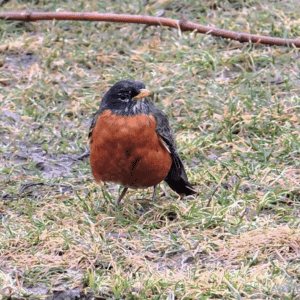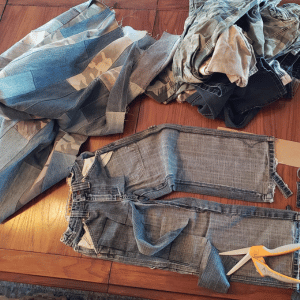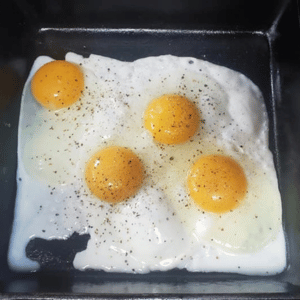Venus in the Rough: Beauty for the Hardworking Woman
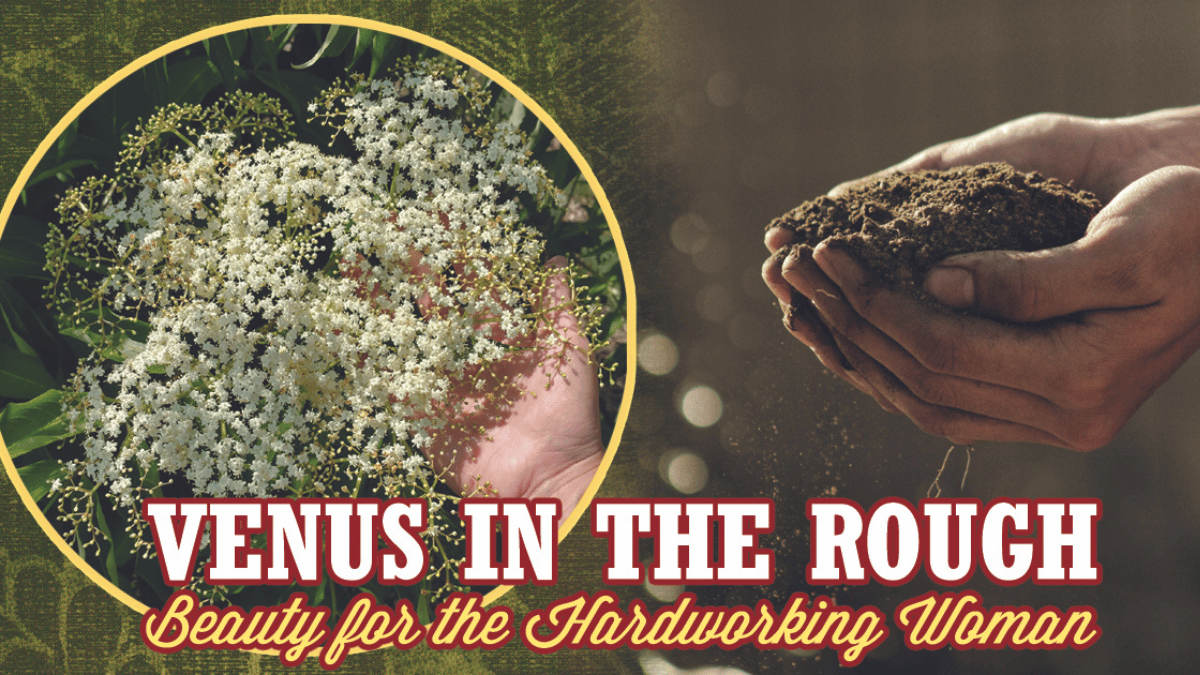
As homesteading women, we are often at the mercy of our schedules, frequently leaving little time for self-care. Being pampered and feeling glorious become an occasional treat versus a staple of our daily routine. It is greatly important for our mental well-being that we access important factors to our beauty, even if taken on a more practical route of application. Like the parts of a tractor without oil, hard-working dry hands can become cracked and painful without maintenance and care.
Let us look beyond the perceptions of vanity that cause us women to feel guilty for embracing any aspect of self-care and instead move forward with an outlook of support. I often feel like a rusty carburetor left out in the rain for too long that just needs a day in the shop. Having healthy skin with practical care is just good for our morale. Enjoying some comfort is nothing new for humanity, and even in the sticks of civilization, we've always sought ways to treat our bodies with extra love.
Looking into the labels of beauty products at the store can lead to many questions about ingredients; certainly, many companies utilize the desire to appear young as a focal point of pushing sales. What can we do as empowered women to step beyond these restraints and access products that are simple, sustainable, and healthy for our bodies? Well, we make them!
Although I have made hair wax and a skin balm for my kids, I wanted to make an easy option for myself that would rejuvenate my face while being made from a simple recipe. I wanted to focus specifically on ingredients that grew readily, were sustainable, could be foraged, were native plants, and could also be made at home. This brought me to research a tallow face cream that while focused on being used for my visage, could also be applied elsewhere, especially for my daughter who has some skin issues.
At the time I am writing this, some of the ingredients unfortunately are not ready for me to dabble with to provide an exact recipe. I do, though, want to provide the research and information behind my thoughts so that you can join me on this journey and contribute your own results for the betterment of our Community.
Ingredients
- Tallow
- Jojoba Oil
- Elderflowers
- Yarrow
- Echinacea root
- Rosehips
First, let's discuss the ingredients:
Tallow
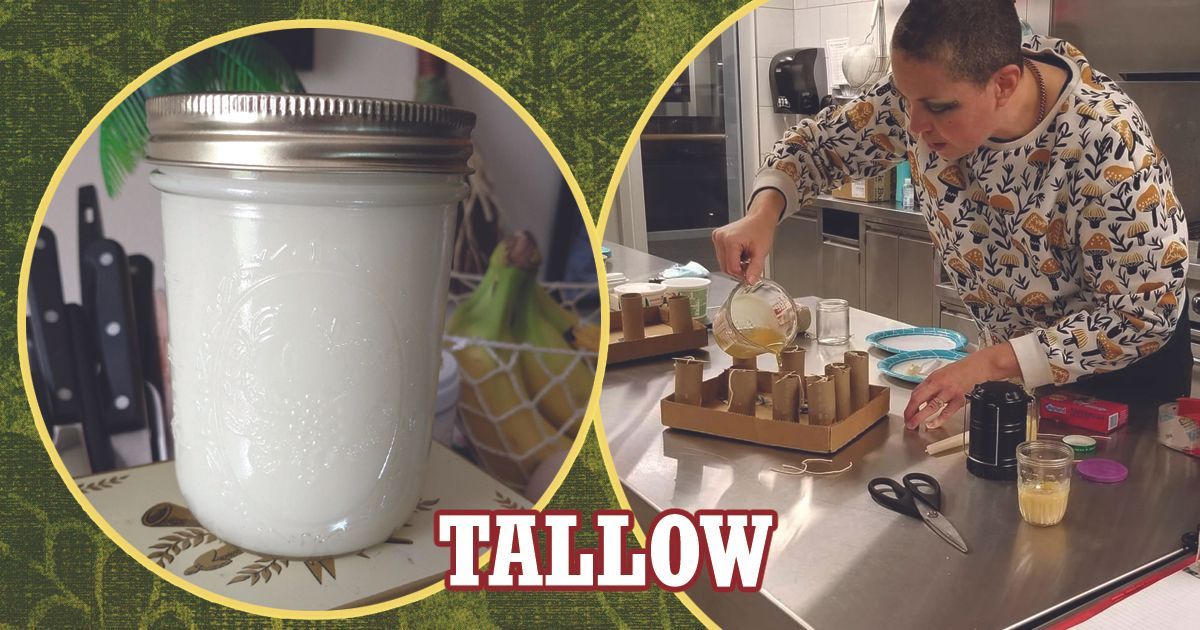
TALLOW is rendered animal fat that when applied to the skin provides essential fatty acids while being tolerated by many skin types without causing irritation or clogged pores. Many consider adding animal fat to the face or body as odd, but it is far more natural and beneficial than a greater portion of commercialized products on the market. There are plant products that can be utilized instead of animal fat, but the sustainability, fair trade, ethical sourcing, and availability of such items in an off-grid setup can be tricky depending on location and lead to another method entirely such as an aloe vera base. If you have an off-grid recipe for a plant-based face cream, please share!
Tallow is easy to make, even from rendering down fat scraps from cooking. The refined tallow itself can be used for a wide variety of projects including candles, leather work, making pemmican, baking, cooking, lubricating mechanical pieces, starching clothing, preventing rust, woodworking, soap making, fire starters, and even as a replacement flux when soldering. For face care, I have often seen mainly beef and deer tallow discussed for the benefits.
Jojoba oil
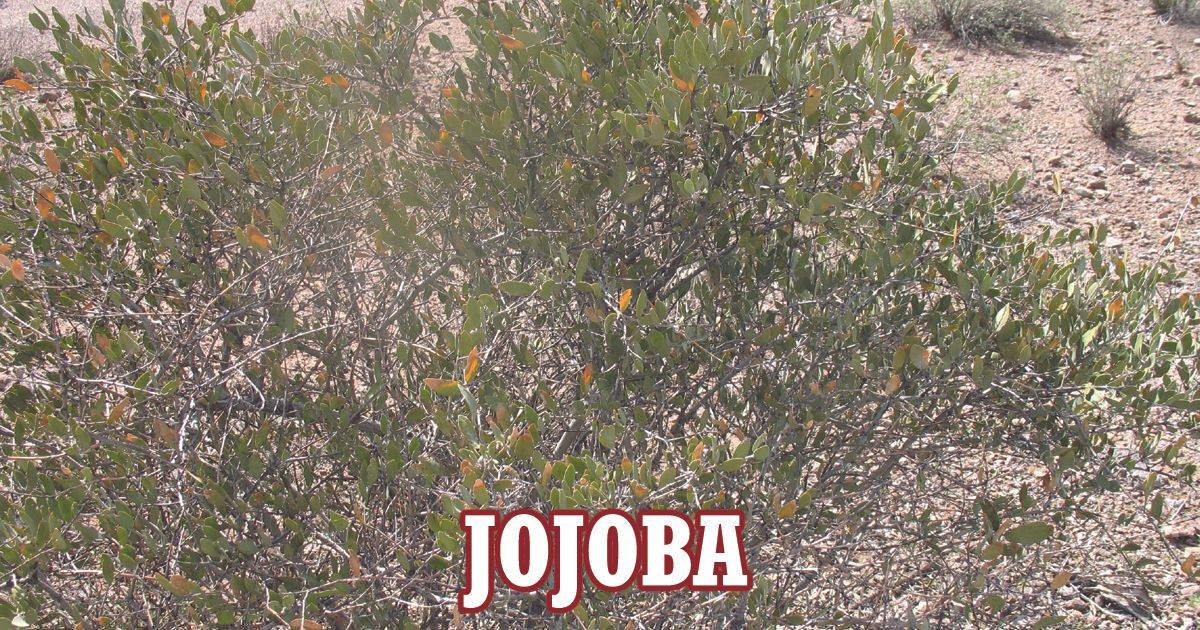
JOJOBA OIL is made from a shrub native to the Southwest United States. Simmondsia chinensis seeds are heated and crushed to produce a liquid wax that can be used in salves or buttery creams on skin and hair to heal, along with lots of other applications. I definitely recommend obtaining this ingredient from the United States, but for those of us outside of the range of growing or trading for a sufficient source if the grid shuts down, this can be an optional addition (although the final product will be harder without an added oil).
I have not done the full research on alternative sustainable oils but am certainly interested if anyone has processed any nuts or seeds to get a product like plum oil which is also very good for the skin. This would be an excellent alternative, especially since native Prunus genus species have large seeds and produce a lot of fruit.
Elderflowers
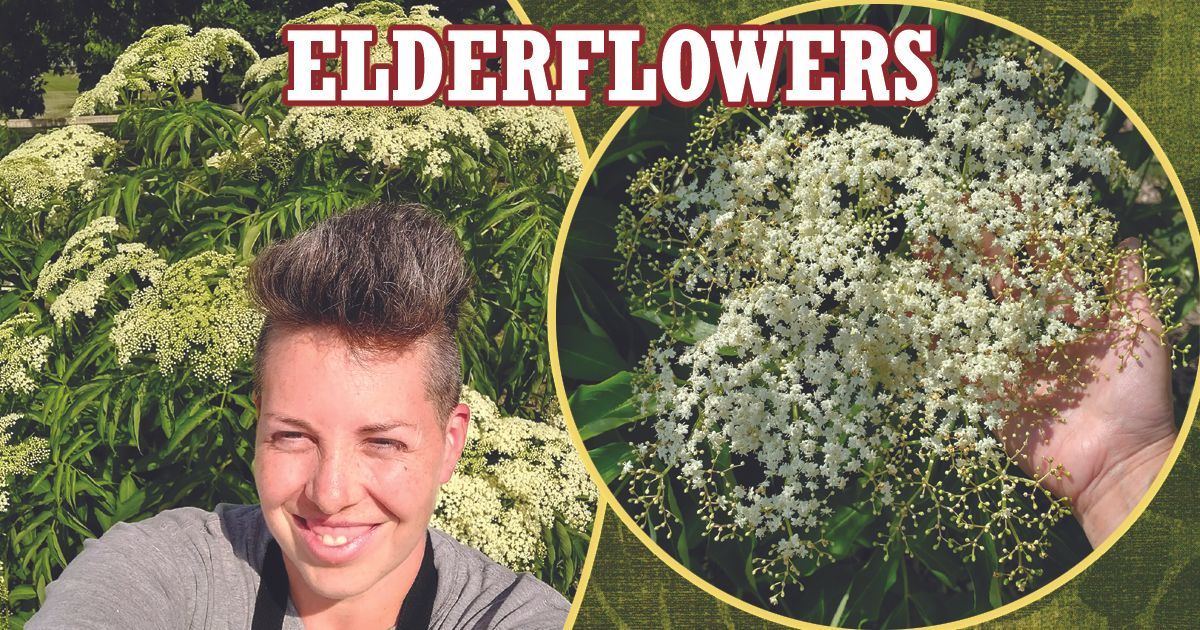
ELDERFLOWERS are from Elderberry bushes before the berries form. The big clusters of white flowers are lovely to look at while having antioxidant and anti-inflammatory properties, boosting collagen, and acting as a skin toner and acne defense. As a native plant to North America, they are often easy to obtain from the wild or from shrubs cultivated on your land. The shrubs are easy to cultivate from cuttings while the plant is dormant or from seed.
They are adaptable to various growing locations and provide benefits for pollinators and wildlife. In my area of the Midwest, Elderberry is a host plant for thirty-three different butterfly and moth species. It is also highly beneficial for our native solitary bee populations that utilize the old canes for their winter homes. I only have two shrubs on our land, and they provide more than enough berries for my family's use; which go into making elderberry wine, teas, and delicious muffins. I usually freeze the berries to increase their sugar content. The flowers in the Midwest make their appearance around mid-June and persist until early July; of course, depending on the weather and temperatures. Snap off clusters of flowers and hang them to dry in a paper bag to catch any flowers that may fall.
Since I did not harvest enough flowers from last year (having a greater desire for the berries), I unfortunately do not have the blooms to play with in this recipe...although I will quite soon!
Yarrow
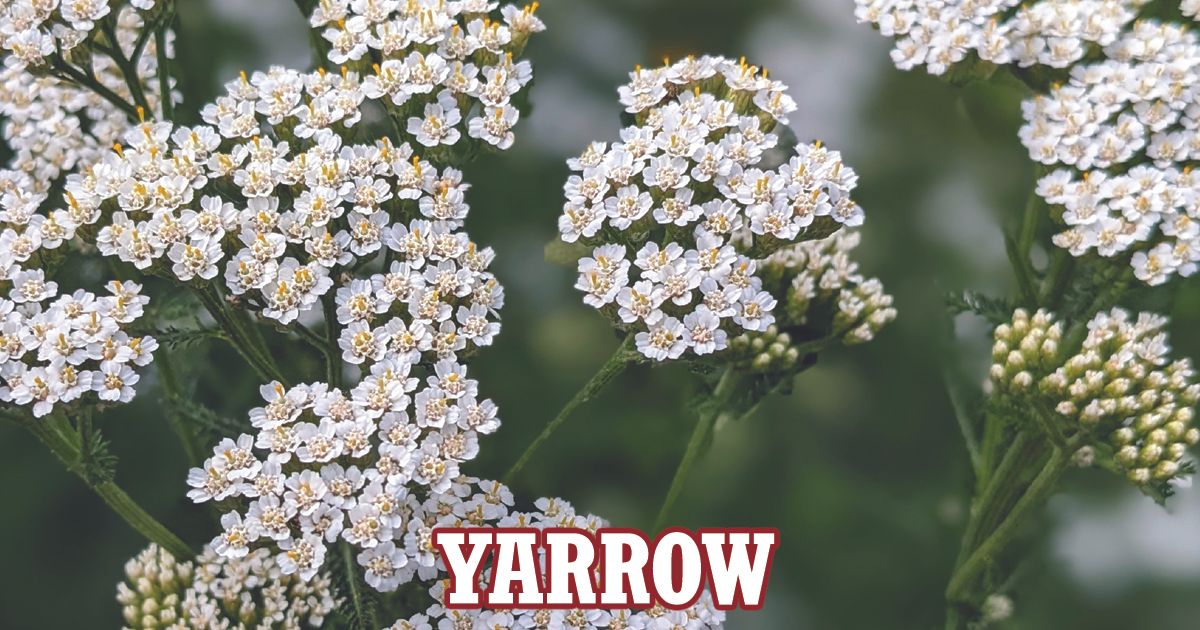
YARROW is an easy-to-forage plant found across North America. It has anti-inflammatory and antioxidant properties and is also quite useful for clotting minor wounds. I discuss the usage of it for external use only and recommend consulting a professional for any internal use as it is not for pregnant mothers. I did have a lot of fun freeze-drying the leaves, powdering them, and then sealing them into small bags for first aid use— placing one in the kitchen, garage, and vehicles. Since my spouse and I both shave our heads, I want to also make a batch this year for the bathroom with any shaving mishaps.
Achillea millefolium, Common Yarrow is found readily enough in the wild. It grows in a rhizome colony, with fern-like leaves popping up in early spring. Pollinators and beneficial insects enjoy the blooms, and it is also a host plant for a variety of moths. An excellent addition to an herb and/or pollinator garden, I haven't noticed it behaving rebelliously by taking over. Oh, and it also makes a wonderful cut flower for arrangements. Take cuttings before 10am and hang them to dry; you can use the leaves and flowers. I use the leaves mainly.
Echinacea
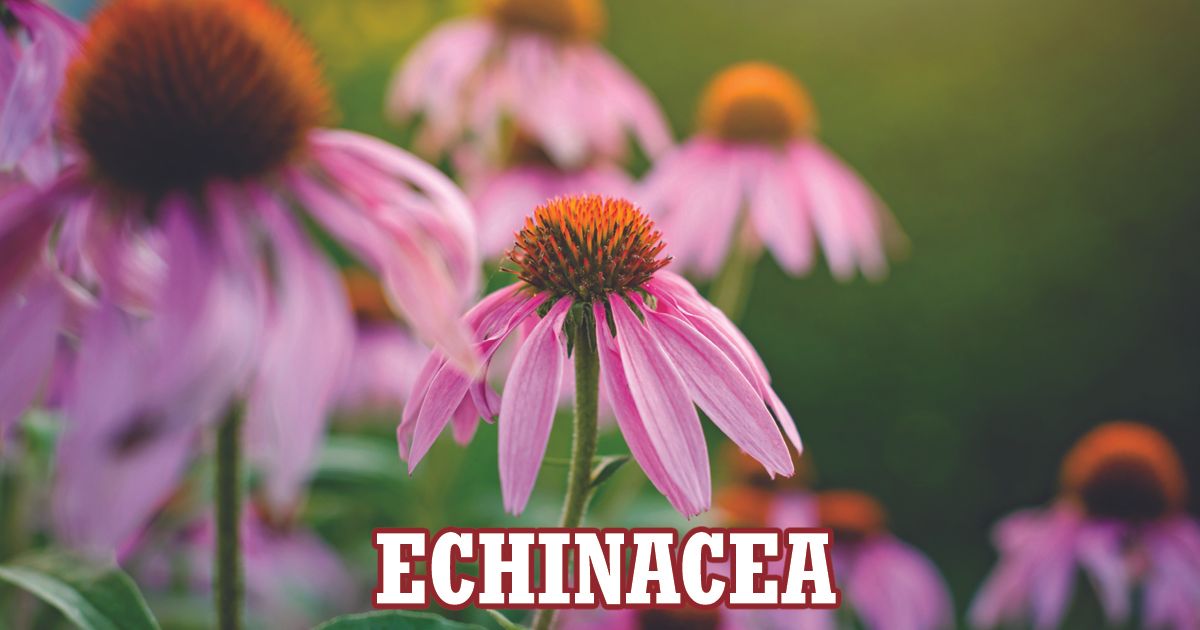
ECHINACEA is frequently obtained from the Echinacea purpurea (aka Purple Coneflower), found as a native plant across much of the United States (although not all). It is not the only Echinacea plant in the genus that is used medicinally, and there is a wide variety of native species that may provide one for you where you live. Echinacea root can be used for skin regeneration, fighting acne, reducing eczema and psoriasis, and the reduction of wrinkles; but there are a slew of other uses both internal and external, and also depending on which species of Echinacea you work with.
Some members of the Echinacea genus send down deep tap roots while others like Purple Coneflower have rhizome fibrous roots. Echinacea with deep roots have been noted by researchers for the nutrient density found in the leaves, which makes them essential for mulching in a permaculture setup vs non-natives. Echinacea as a whole are highly favored by our pollinators and birds that eat the seeds readily. They also are beautiful cut flowers, and the plants are easy to grow and maintain.
Echinacea angustifolia, the Narrow Leaved Coneflower is frequently chosen for medicinal quality over Purple Coneflower; it will also give you a wider root to work with. Cultivate it for sustainable and wise land practices to retain wild populations; dig up, clean, and dry roots from plants 3 years old in the fall and dry. The leaves should be retained and dried also; which can be used in teas and other uses.
Rose hips
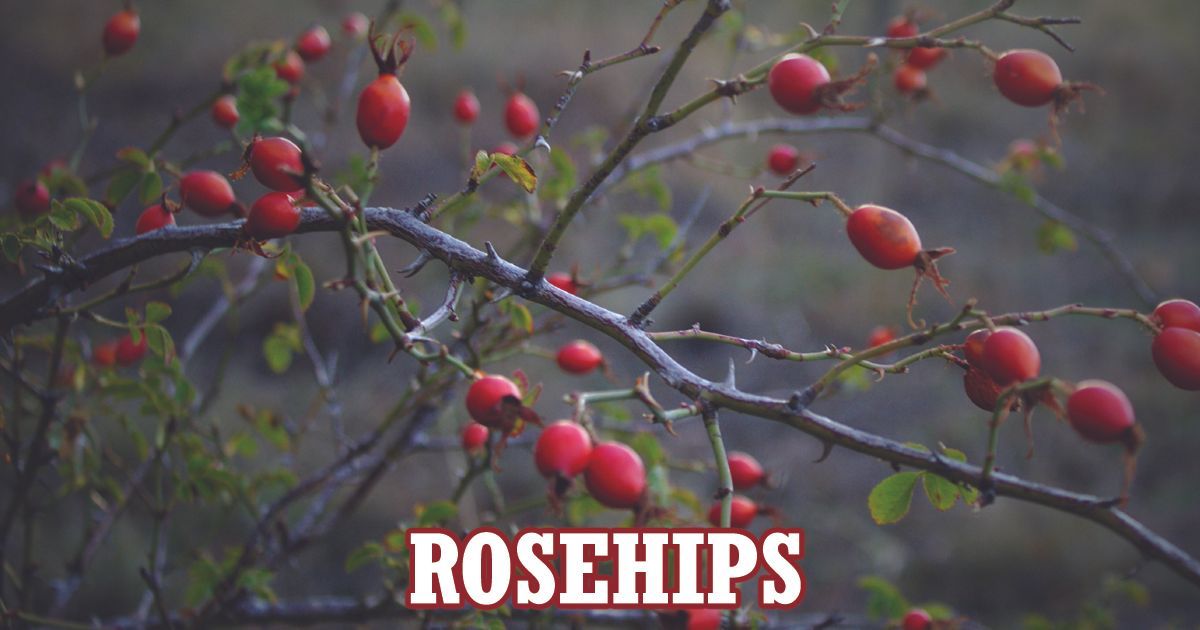
ROSE HIPS can be easy to obtain, being the remaining seed head of rose species after they are done blooming. The seed head turns a lovely reddish hue in the late fall and is high in vitamin C. They are often used for baking, teas, sauces, and liquor making. I recently made a rose hip extract I bottled up to use in my baking. Rose hips are also listed for their value in beauty products; regenerating skin cells, keeping skin hydrated, providing elasticity, preventing wrinkles, and giving a natural glow.
Rosa carolina aka Pasture Rose is the most widely spread native rose across the Eastern USA, but Rosa Woodsii (Mountain Rose) is found out West. There is a lot within the Rosa genus that you can readily find or cultivate, and aside from their beauty and smell are also a host plant for a variety of butterflies and moths if choosing native species. The briars can be effective with hedgerows.
Go out in the late fall (October/November) and pick your rose hips. Clip off the ends and allow to dry for 3-5 days. The arduous process now begins by cutting them in half and scooping out the seeds and interior hairs; the hairs are irritable and should be avoided. If the process is proving too difficult, let them dry a little longer before trying again. Dry the final product until they are hard to the touch.
Other ingredients?
A wide variety of other plants readily found in the wild can also provide benefits to the skin. Mullein, Horsetail, Hops, Prickly Pear seeds, Goldenseal, Plantain, Chickweed, Violets, Goldenrod flowering tops, Calendula, and quite a few more. Adding antimicrobial and antiseptic herbs like Lavender, Garden Sage, Oregano, and Beebalm are effective for an all-purpose balm. For this, yarrow was the choice, but Beebalm is another native wildflower I would gladly use. Take a look at what you can obtain in the wild sustainably or cultivate responsibly on your land that would fit your environment and needs.
Combining ingredients
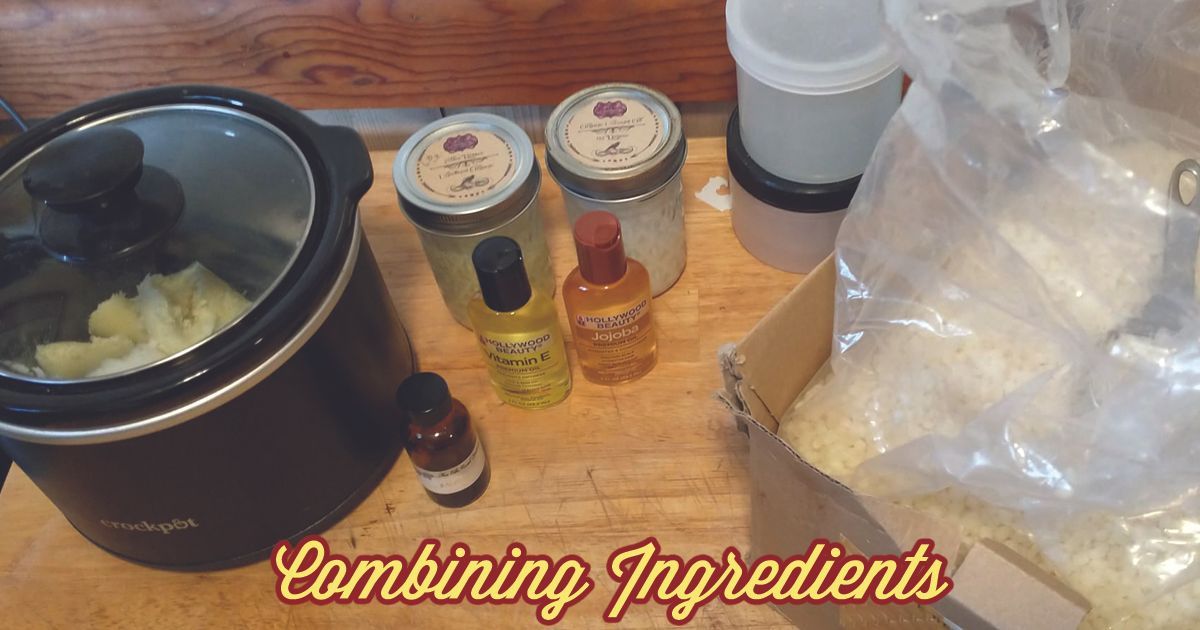
Once you have your ingredients, the basic recipe is:
- 1 cup of tallow
- 1/4th cup of oil
- 1 cup of dried herbal material
I use a specific small slow cooker for just my herbal work, but a pot on the stove kept as low also works; you'll want to monitor the flash point of the oil you use for the recipe. Jojoba oil and coconut oil have similar flash points to beef tallow; their higher flash points keep them from going rancid while cooking (lower flash point oils will smoke if cooked too long and hot). Using dried herbs helps keep any water out of the mix (water makes it less shelf-stable).
Add the tallow, oil, and herbs to your pot, cover, and let it cook on low heat for hours and longer if possible. You'll want to get as much goodness from your herbs as possible. The rosehips in this recipe will add a bit of floral note to the final result, but give the mix a whiff after it has been going to see if it is appealing for you. If not, add some lavender, rose petals, or another herb of choice. Some prefer to use essential oils for their aroma, but I try to use them rarely since their sustainability is tough.
Once you're satisfied with your ravishing cauldron, strain out the mix to remove the dried herbs. You could pour the mix into jars, or alternatively try doing a whipped tallow by whipping it for 5-8 minutes after it has cooled a little and started to solidify. It lasts about 3-6 months and can be used quite sparingly with a little going a long way. Usage after a shower or cleansing of the face is recommended; warming the product up in the hands and then applying.
I cannot wait for you to try this out on your own and let me know how you enjoy the results! I am currently feeling more of a Yeti from the Bog of Eternal Stench than a Venus to be admired, but I know when I am around my people, my lady homesteaders, that they always lift me up. Happy healing and pampering!
